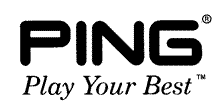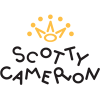WANT TO IMPROVE YOUR PUTTING?
CUT 5-10 SHOTS WITH OUR FREE GUIDE. DETAILS HERE
Looking for a face balanced putter 2023-2024 season?
DON'T BUY ONE UNTIL YOU'VE READ THIS!
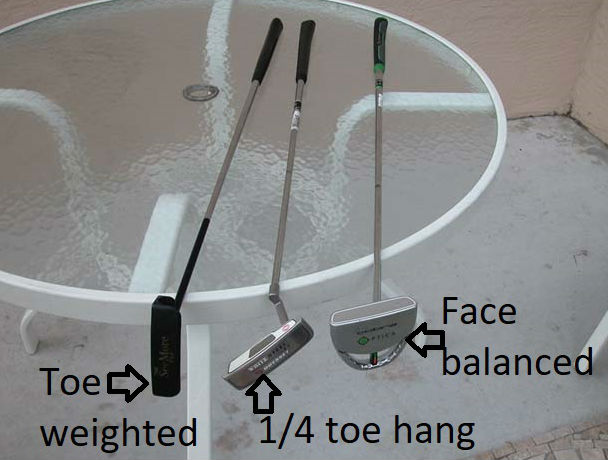
What is a face balanced putter?
A putter is face balanced - like the one on the right in the picture above - if it is weighted so that the head is perfectly balanced between the toe and the heel relative to the point where the shaft enters the head.
Sounds complicated, but really it means that the face is designed to turn less in your stroke.
To test whether your putter is face balanced, lay the shaft of your putter across your palm or on your index finger. If the face settles in a balance point where the face, points up at the sky, then it's a face balanced putter. If the toe points down then it is not ... it's a toe-hang putter.
Depending on the type of stroke you have, encouraging less rotation in the putter face can work wonders for your putting, or it can be disastrous.
Read on to find out whether this kind of putter is what you need...
My experience with face balanced putters:
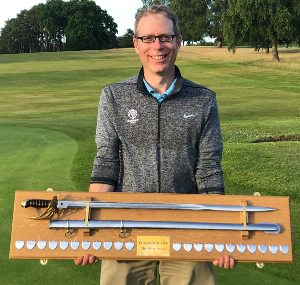 I had the yips, but have got my putting back to play top class amateur golf!
I had the yips, but have got my putting back to play top class amateur golf!I used to play professional tournament golf but had to give up due to the YIPS. I tried dozens of different putters. I was hell-bent on producing a straight-back-straight-through stroke, but I now know that this is:
a) impossible to produce.
b) massively detrimental to your putting game.
A face-balanced putter should work with a straight-back-straight-through stroke as it is designed to resist putter face rotation and could therefore hold the face square to the target reliably.
But in fact I actually produced a disastrous out-to-in cut stroke, like most people do when they try to make straight strokes with the putter.
... And that's how I got the YIPS!
My hands would flinch as I got close to the ball and I couldn't control the direction or the speed of my putts.
The cure was to develop an arc-shaped stroke and I used a toe-hang putter initially to encourage this, the weight of the toe encouraging the correct opening and closing of the face on an arc'd stroke.
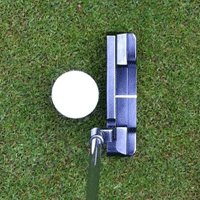 A toe-weighted putter helped me get the putter opening and closing in an arc'd stroke A toe-weighted putter helped me get the putter opening and closing in an arc'd stroke |
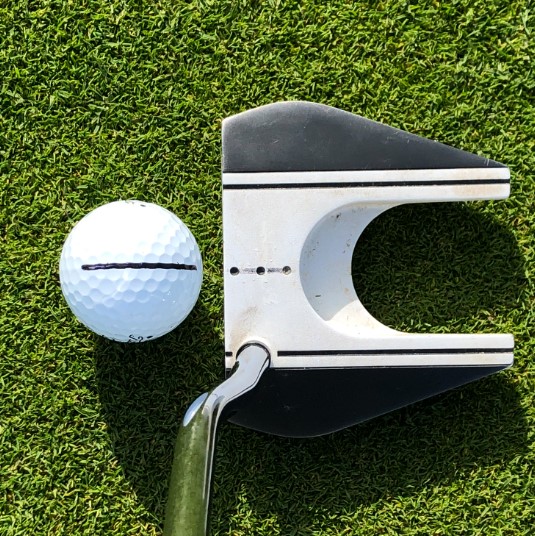 Once you have an arc'd stroke established, a face balanced putter often works better Once you have an arc'd stroke established, a face balanced putter often works better |
Then, when I could reliably do this, I transitioned to a face balanced model and have putted well ever since, representing my regional amateur team at men's national finals and winning trophies like the one above.
I beat the YIPS and cut 10 shots off my putting game.
Click here if you'd like to do the same.
You should try a face balanced putter if ...
- You're trying to produce a slightly arc-shaped stroke (i.e. your putter head moves slightly to your foot side of a the target line in both the backswing and through swing).
- You're trying to use a straight back and straight through stroke - but I highly recommend you don't! (Click here to find out why).
- You have over-active bottom hand on the grip... a face balanced putter is of great benefit because it reduces the amount your putter face rotates open and closed during the stroke.
- You're consistently pulling your putts to the left (reverse if you're left handed)
What are the advantages of a face balanced putter?
Because the face of a face-balanced putter is weighted to stay parallel to the horizon, through the impact area of your stroke it prevents the face of the putter from rotating dramatically in your forward stroke.
Therefore it is best suited to a slight arc.
As long as you are not cutting your putts, then a face-balanced putter is the easiest putter to use and it requires the lowest skill level. The majority of golfers at all levels now use face-balanced models of putter.
As they are mainly mallet shaped, these putters tend to have a larger sweet spot.
This head shape also allows for a longer aiming line on the top of the putter and other alignment aids such as parallel line patterns which are proven to accuracy of your clubface aim at address.
Another advantage of face balancing is that it gives you a soft feel. Rather than the sharp (yippy) feel of the face rotating through impact, face balanced give you a feeling of stability of the putter face through impact.
Face balanced mallet putters are almost always high moment of inertia (MOI) putters and the way the center of gravity works in this type of putter means that they both resist twisting on off-center strikes. Putters with ultra high MOIs like the Taylormade spider X or Scotty Cameron Phantom X are always face balanced and if you're happy with they way they look, then you'll have all the technology behind you.
Famous players who use a face balanced putter:
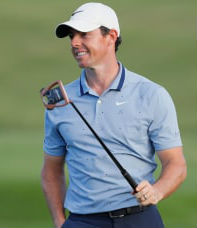
The trend towards mallet style, face balanced putters has been unrelenting since their invention Many of the best men and women players in the world use a face balanced putter, including Rory McIlroy, Jon Rahm and Xander Schauffele.
As I write this (late 2023), 8 out of the top 10 on the men's world rankings use a face-balanced putter. Back in 2019 that number was just 4 out of 10. Before the year 2000 virtually all top pros used a bladed putter.
All that said, I would say that many of the most natural and best putters in the world use toe-hang putters.
Tiger Woods' Scotty Cameron is a toe-hang putter and this suits his naturally pronounced arc with the face of the putter opening and closing to produce a very small amount of hook spin, which Woods has talked about as one of his secrets of putting.
Cameron Smith is another very natural (and great) putter who favors a toe-hang blade design.
So why do these great players want more weight in the toe of the putter?
A face-balanced putter is not for you if...
- You're aiming for a fairly pronounced open-square-closed arc stroke like Tiger Woods. In this case a toe hang (aka toe-balanced) putter would be a better idea as it supports this stroke shape.
- You're struggling to release the putter through impact and are blocking everything right (reverse if you're left handed).
- You're trying to move away from a straight putting stroke or you struggle with a cut stroke, then a toe-hang putter will help you (like it helped me) to break this destructive shape stroke.
- You tend to leave putts short, then you may find your distance control improves if you experiment with toe-weighted putters.This is because the golf ball generally comes off faster from the face of a toe-weighted or blade putter for the same amount of hand movement. The weight of the toe rotating through impact adds speed to the face.
- You don't like mallet style putters. There are some face-balanced blade putters, but the vast majority are bulky mallets which, most people thing are not a great look.
- You prefer an onset putter: Given that it's almost impossible to make a face balanced putter without a double bend shaft, this style of putter isn't for you if you prefer an onset putter. Some people find they can aim onset putters much more reliably.
So if you feel more like an artist and value the aesthetic of the putter, then either a straight blade or face-balanced blade will be a great choice.
Still not sure whether a face balanced putter is right for you? Click here for our guide to choosing the right putter.
Will a putter fitting help you decide?
Remember that your putter is the most used club in your bag. If you don't get on with your current putter and you want to score lower, then it's time for a change.
Fittings are great to assess lie angle, length of shaft, whether you deliver the putter better with larger grips or thinner grips and they can give you detailed information about how you deliver the face on a dead flat putt.
Where they are limited though, is that they can't determining which shape of putter best suits you in regular play with different breaks and slower and faster greens.
The best way to do this is to try a variety of putters on the golf course.
And I mean more than just a quick trip to the putting green.
Here's another, cheaper (and in my opinion better) way to do get the right putter for you...
Go for a putter fitting with a SAM lab or other stroke analysis tool and then buy a selection of used putters on ebay which are on your possibles list. Once you've tried them all out for a few rounds and settled on one style, get rid of the putters you don't like on ebay and you'll be left with the one you like at a much lower cost.
Click on the links below to find out which face balanced putter is the best with Best-Putter.com's independent, hands-on reviews, you'll also find where to buy them at the best prices!
Best-Putter.com's reviews of face balanced putters:
Click below to jump to independent reviews of putters from that manufacturer: | ||
|---|---|---|
 |
on a Callaway putter... |
Callaway Tuttle

... on a Cleveland putter
Cleveland T Frame
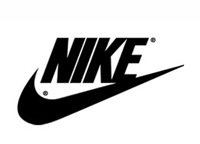
Nike

... on a Nike putter
Nike Method 004
Nike Method 005

Never Compromise

... on a Never Compromise putter
Never Compromise Alpha
Never Compromise Voodoo Daddy Belly Putter
Never Compromise NCX Ray
 Nice face balanced belly putter with a big, but light head.
Nice face balanced belly putter with a big, but light head.
Odyssey

... on an Odyssey putter
Odyssey 2 Ball
 The iconic putter of the 2000s - easy to aim, great feel
The iconic putter of the 2000s - easy to aim, great feelOdyssey Backstryke
 One of the most revolutionary designs in putting. Love it or hate the look, the results are good
One of the most revolutionary designs in putting. Love it or hate the look, the results are goodOdyssey White Ice 5
 Classic face balanced D shape with silky soft Ice White insert!
Classic face balanced D shape with silky soft Ice White insert!Odyssey White Hot 7l
 Great looking long putter with slightly dead feel - excellent for fast greens
Great looking long putter with slightly dead feel - excellent for fast greensOdyssey White Ice Progressive Terron Mid
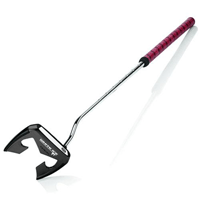 Sharp edged star ship of a putter - you need to like futuristic shapes to use this one!
Sharp edged star ship of a putter - you need to like futuristic shapes to use this one!Odyssey Rossie II Belly Putter
 Classic D shaped head used by Annika Sorenstam amongst many others!
Classic D shaped head used by Annika Sorenstam amongst many others!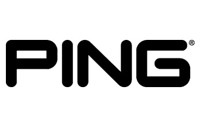
Ping

... on a Ping putter
Ping Crazy E
 One of the easiest putters to line up we've ever tested, but feel is hollow
One of the easiest putters to line up we've ever tested, but feel is hollowPing Scottsdale Pickemup
 This cross between the Batman sign & a Star Wars fighter has surprisingly good feel
This cross between the Batman sign & a Star Wars fighter has surprisingly good feelPing iN Wack-E
 A radical spin off from the successful (but hollow-sounding) G5i Craz-E
A radical spin off from the successful (but hollow-sounding) G5i Craz-EPing IN
 Technology has led the Ping designers to create a holy mess of a putter. If you love the weird and the whacky, you might (just) like this
Technology has led the Ping designers to create a holy mess of a putter. If you love the weird and the whacky, you might (just) like thisRam

... on a Ram putter
Ram Zebra
 Iconic putter from the 1980s & 90s. Face balanced and with a great alignment aid.
Iconic putter from the 1980s & 90s. Face balanced and with a great alignment aid.
Rife

... on a Rife putter
Rife Hybrid Tour Mallet
 Despite the Tour element to this putter's name, we haven't seen any of them actually on the pro tours. One of the least impressive of Rife's range
Despite the Tour element to this putter's name, we haven't seen any of them actually on the pro tours. One of the least impressive of Rife's range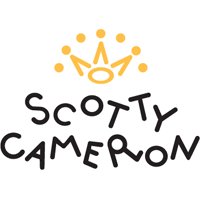
Scotty Cameron

... on a Scotty Cameron putter
Scotty Cameron Studio Select Kombi Mid
 A big hulk of a putter - face balanced with a long aimline
A big hulk of a putter - face balanced with a long aimlineScotty Cameron Futura
 Phil Mickelson toyed with the Futura, before heading back to a blade. The first of the truly futuristic putters, and probably about as attractive as they're ever going to be
Phil Mickelson toyed with the Futura, before heading back to a blade. The first of the truly futuristic putters, and probably about as attractive as they're ever going to be 
TaylorMade

... on a TaylorMade putter
TaylorMade Spider
 Lots of hype when this putter launched, and pros who rely on their putters took a while to get used to the Spider, but now seem convinced
Lots of hype when this putter launched, and pros who rely on their putters took a while to get used to the Spider, but now seem convincedTaylorMade Rossa Kia Ma Fortuna
 A highly refined mallet from TaylorMade - recommended!
A highly refined mallet from TaylorMade - recommended!
Yes

... on a Yes putter
Yes Natalie (C-Groove)
 Futuristic design with amazing roll, super long aimline and nice ping sound!.
Futuristic design with amazing roll, super long aimline and nice ping sound!.Yes Emma
 The least attractive of the Yes belly putters - although that's just our opinion
The least attractive of the Yes belly putters - although that's just our opinionYes Tiffany
 Sadly a hideous futuristic design, but at least it has an aim-bar behind hitting surface to help you align
Sadly a hideous futuristic design, but at least it has an aim-bar behind hitting surface to help you alignYes Carolyne
 A straightforward heel and toe design with great roll from the C-Groove
A straightforward heel and toe design with great roll from the C-GrooveZen

... on a Zen Oracle putter
Zen Oracle
 Impressive mallet putter with high tech grooves designed to reduce the dispersal of your putts.
Impressive mallet putter with high tech grooves designed to reduce the dispersal of your putts.
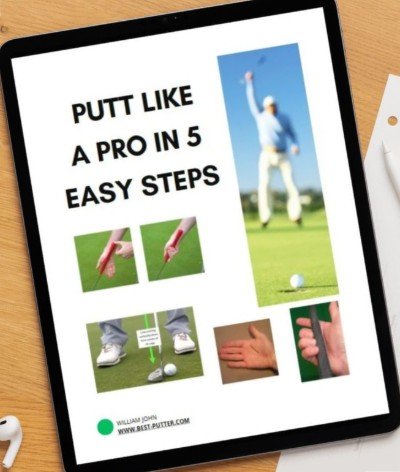 |
Return to the Best-Putter.com homepage



